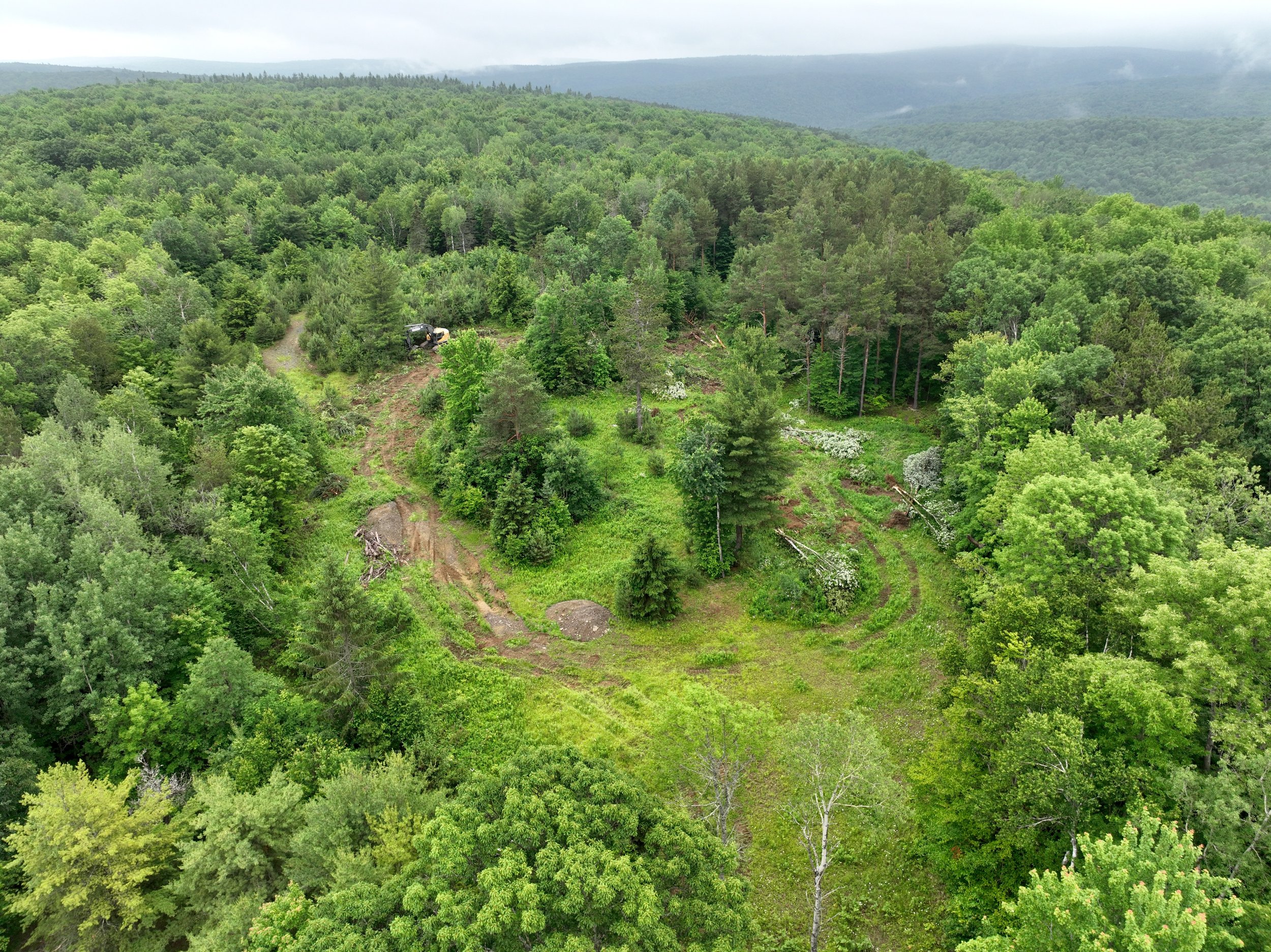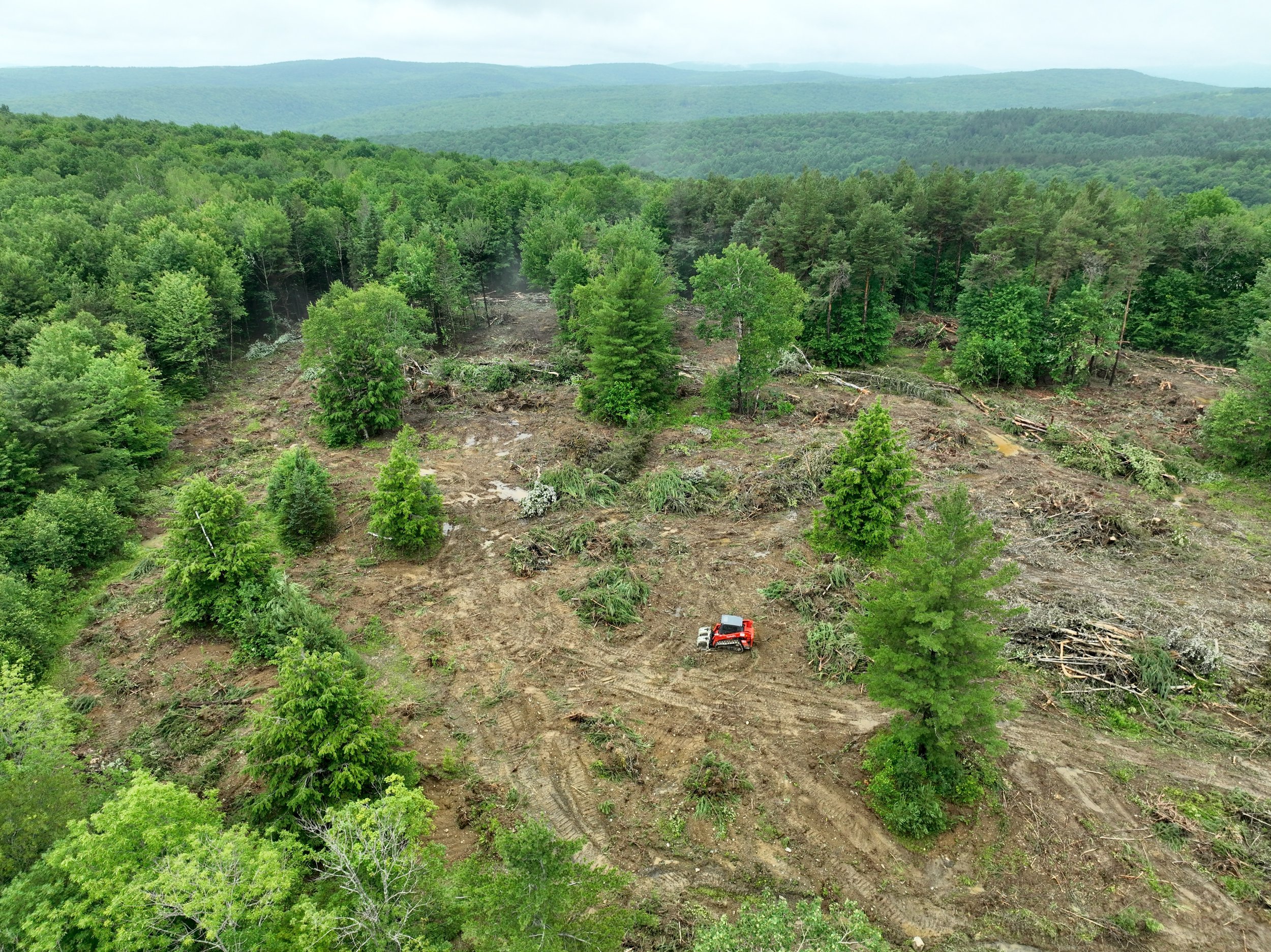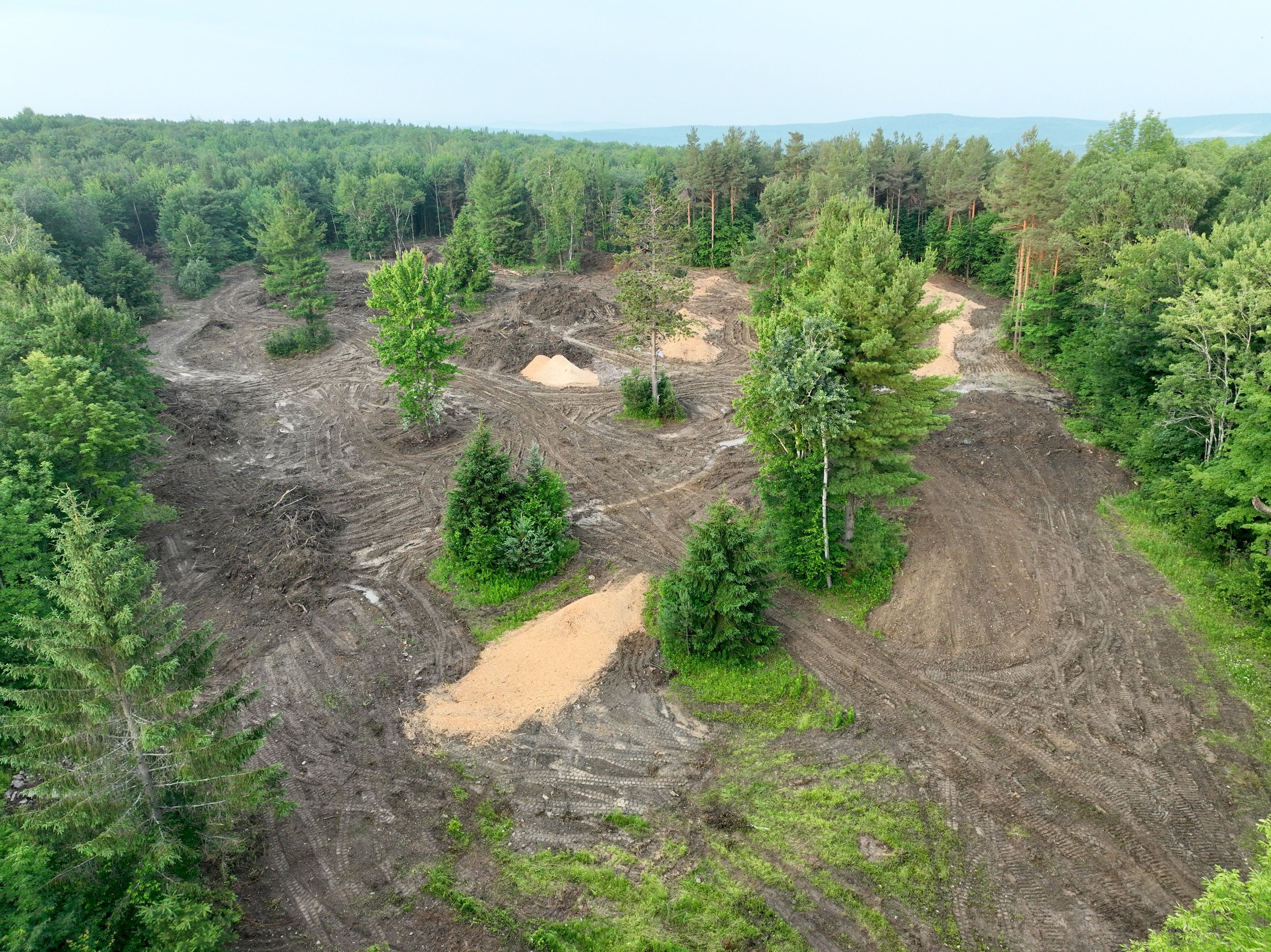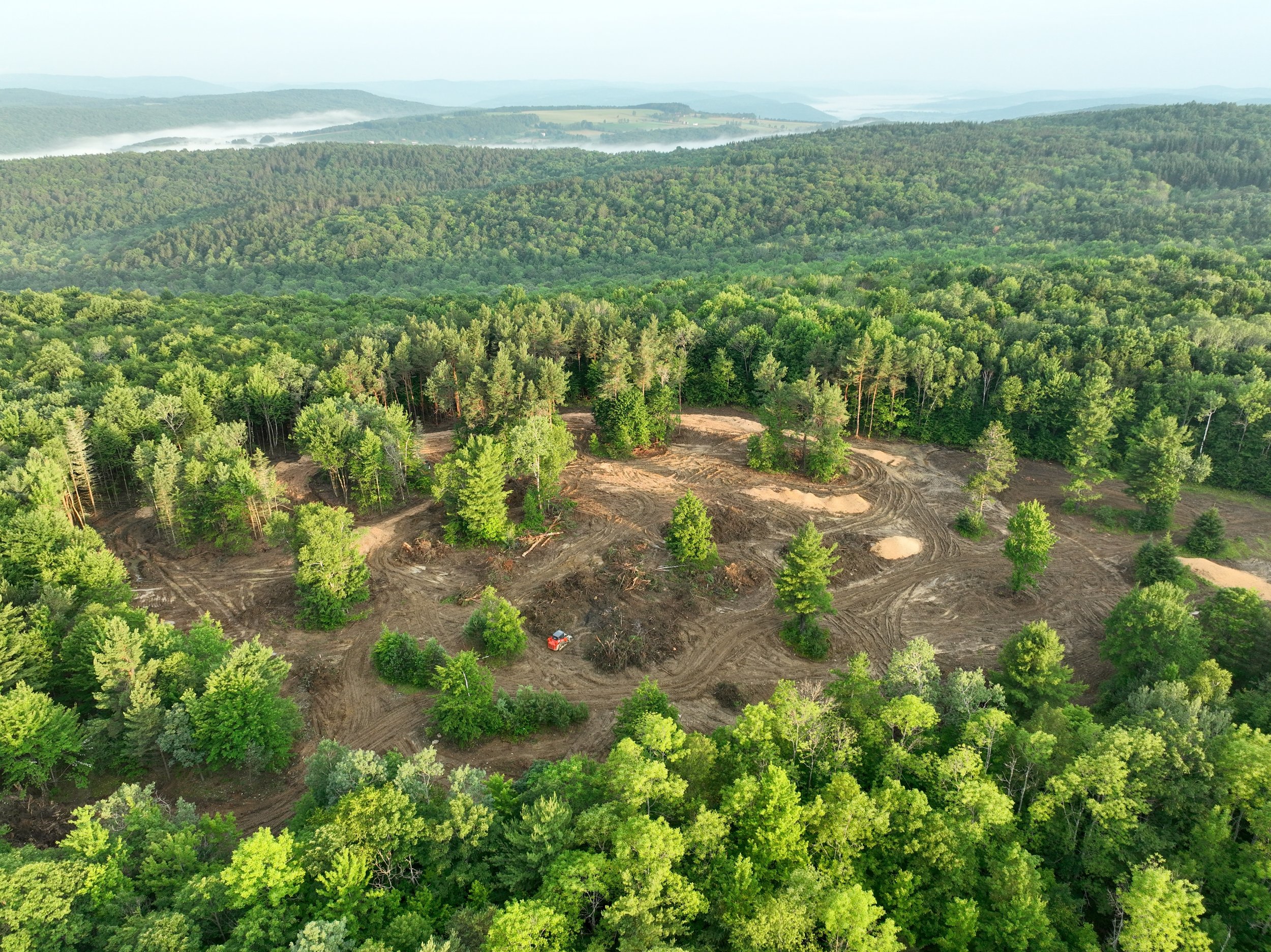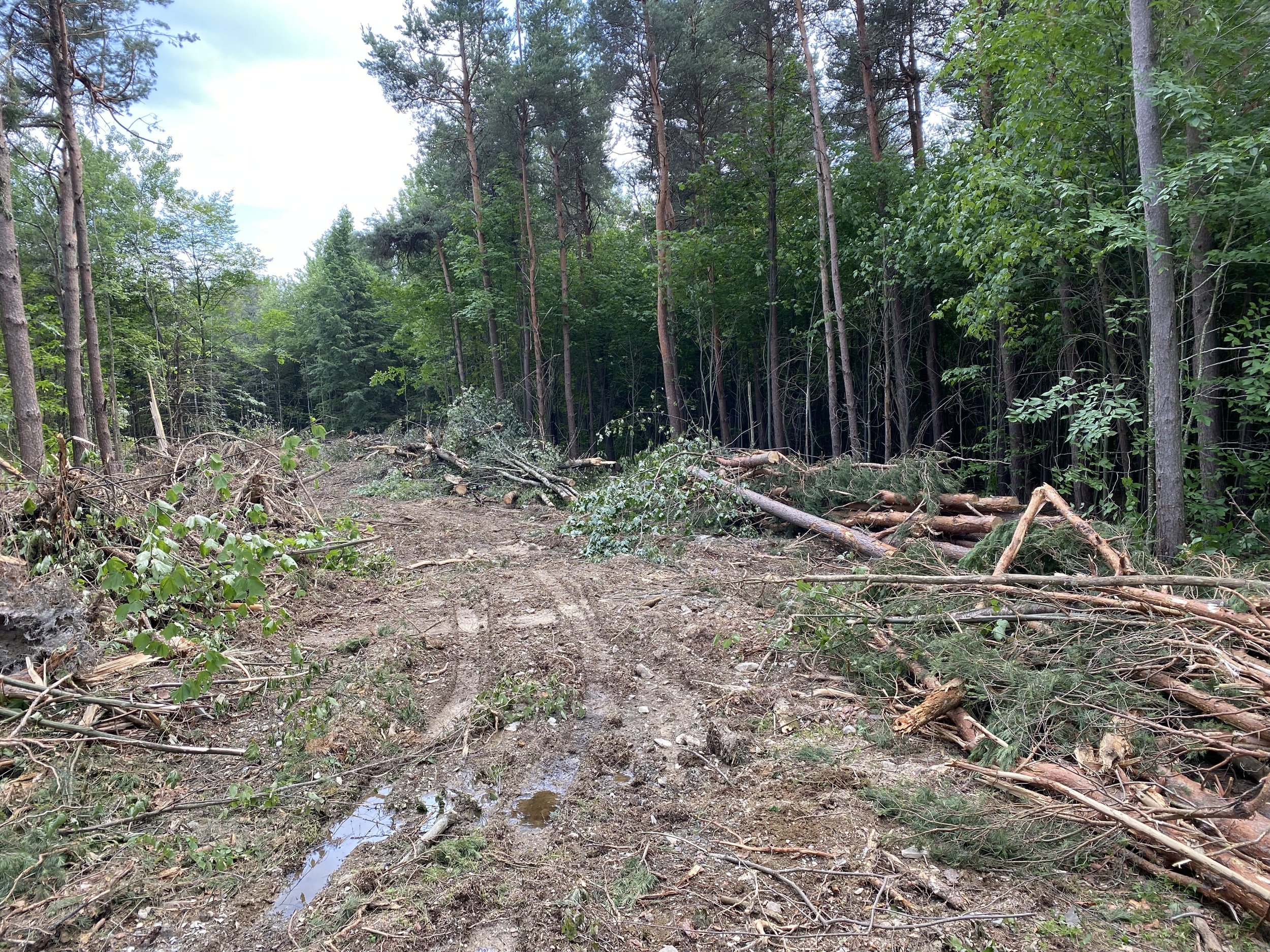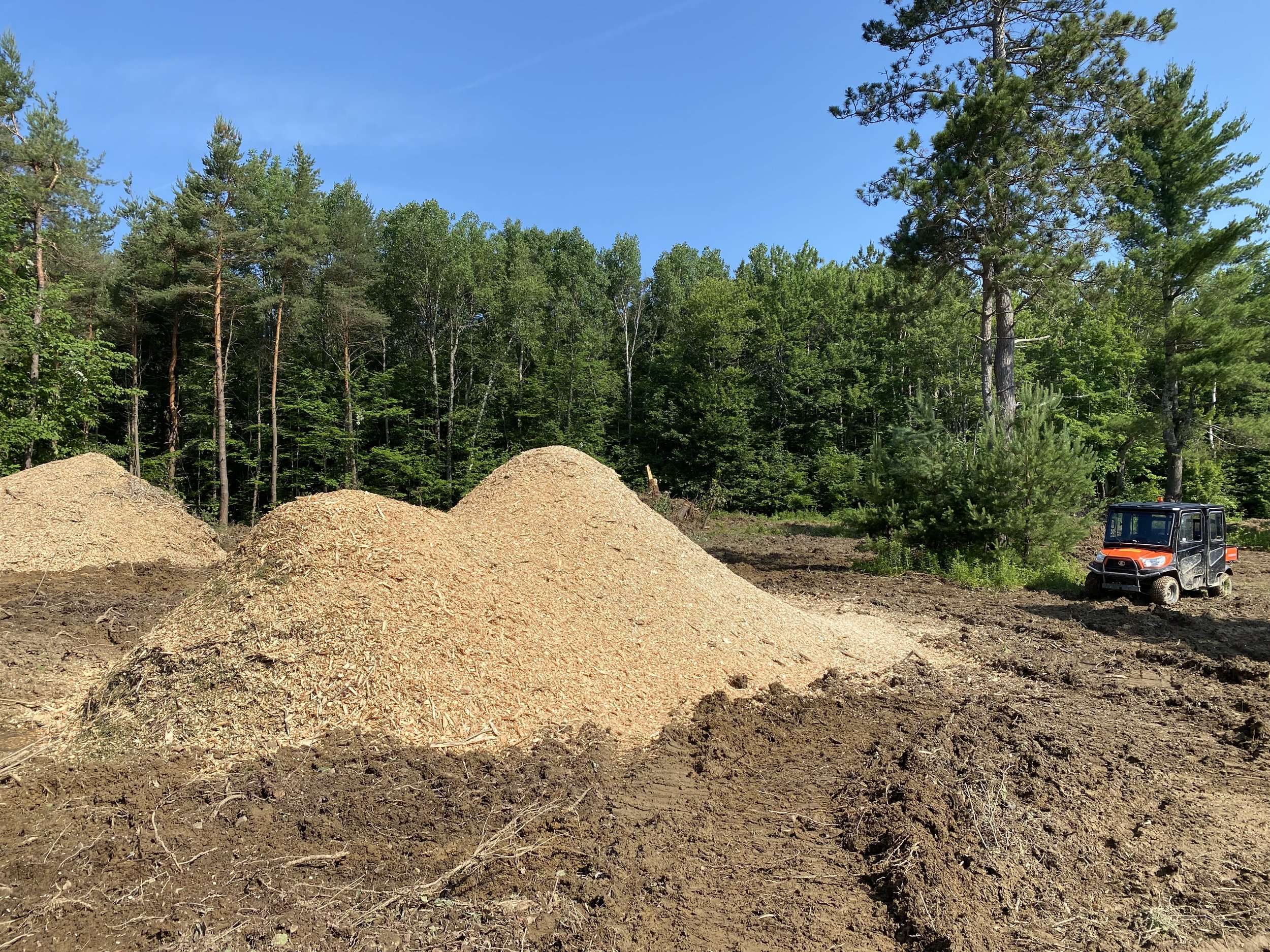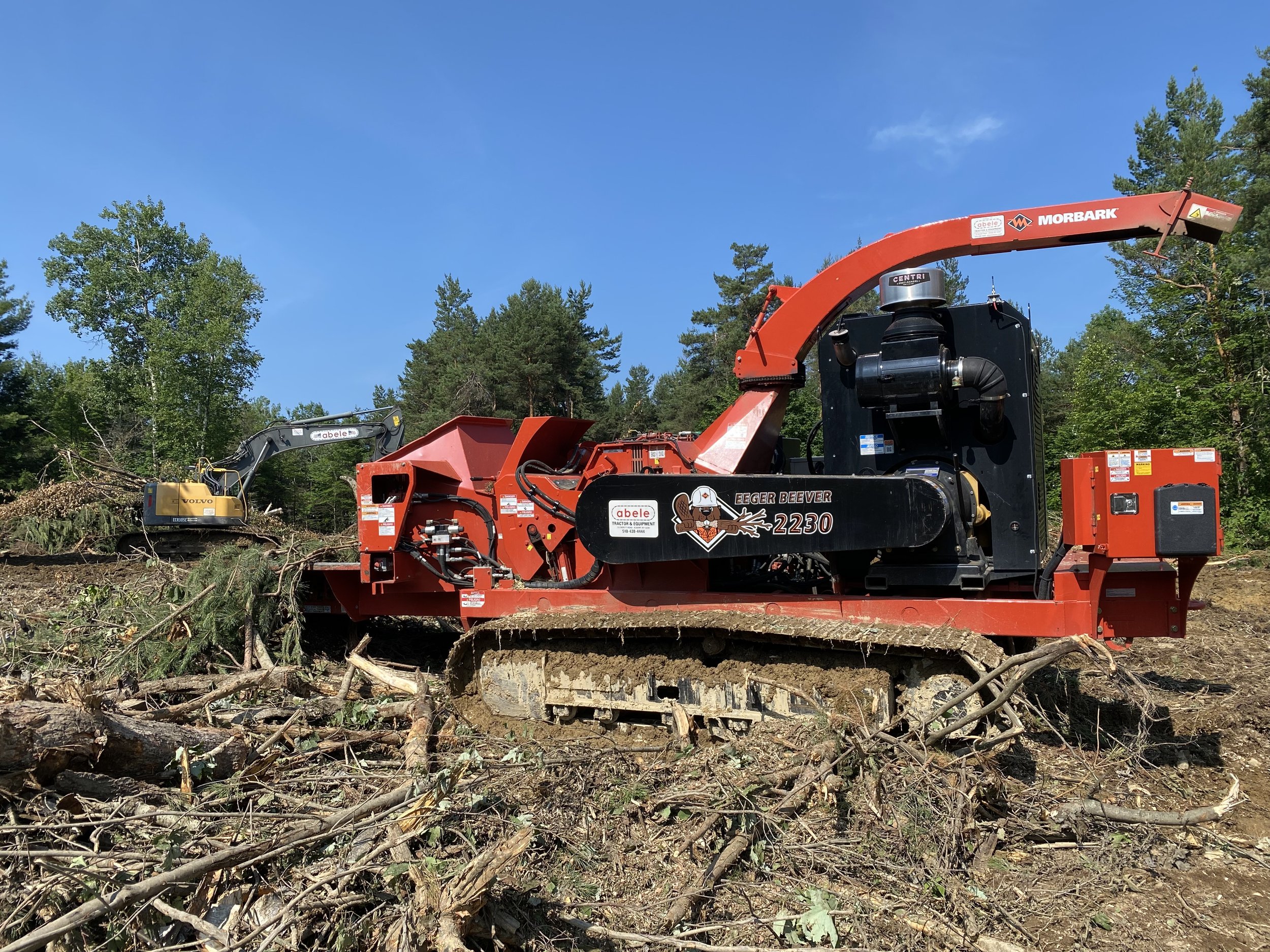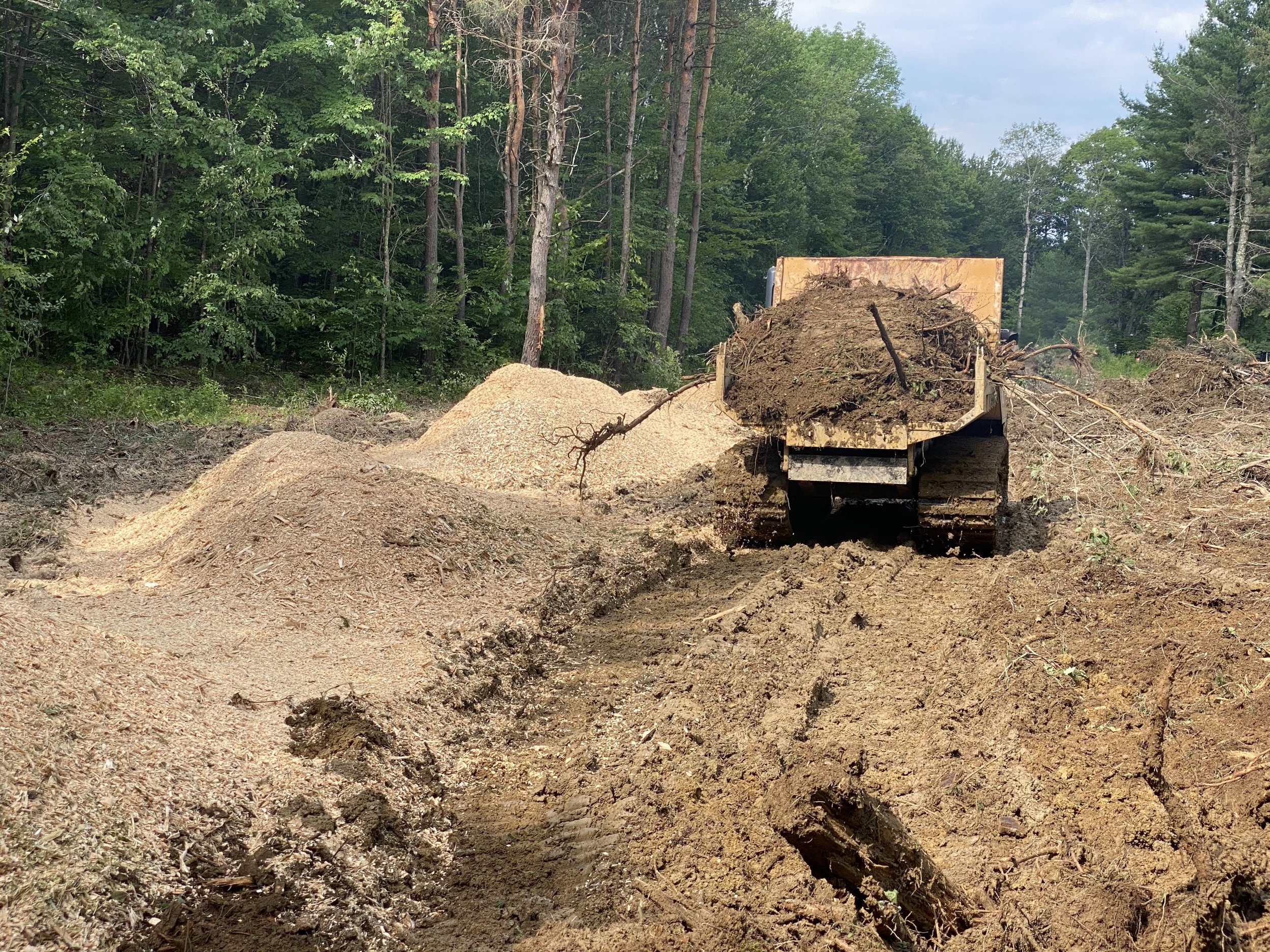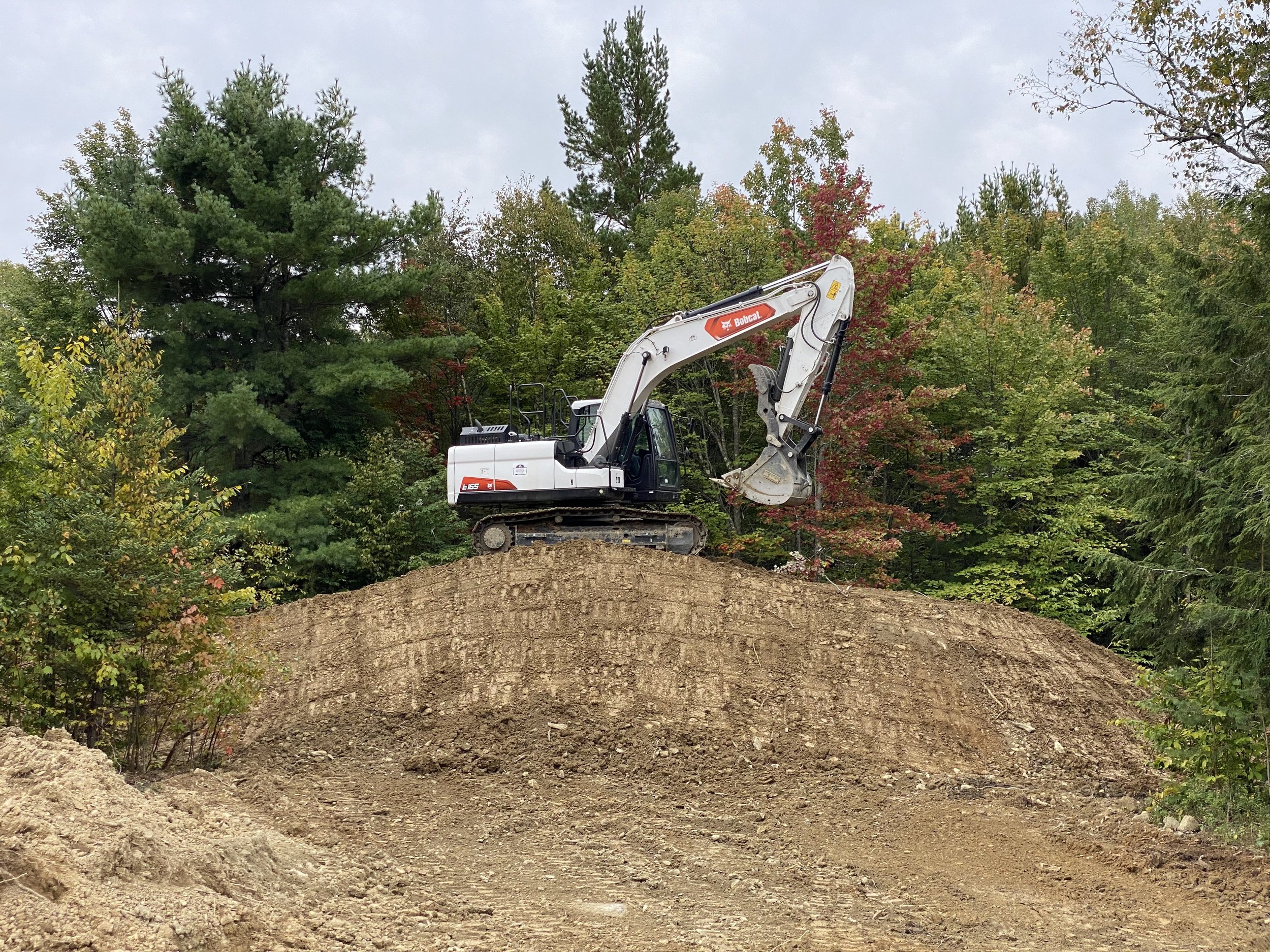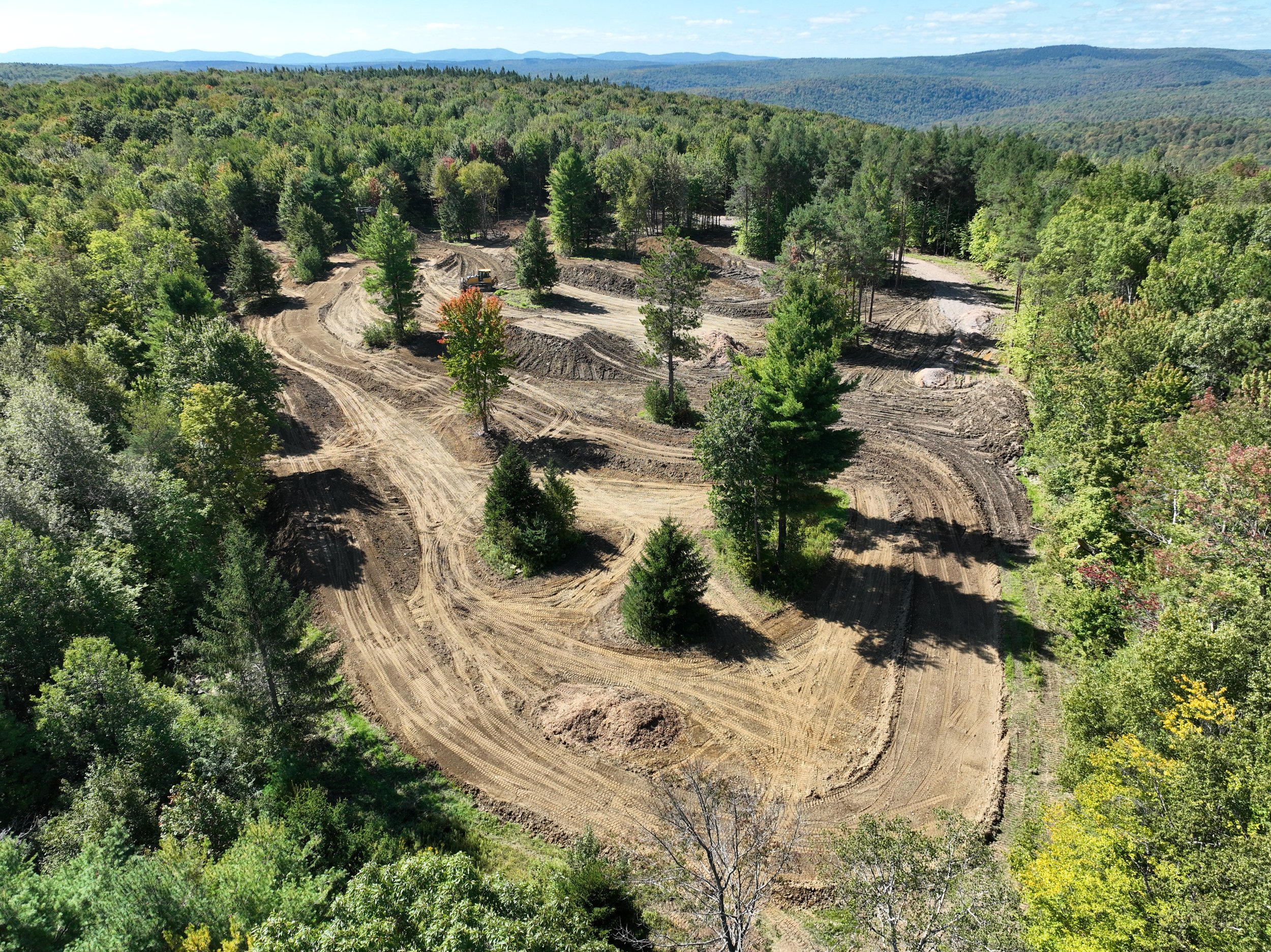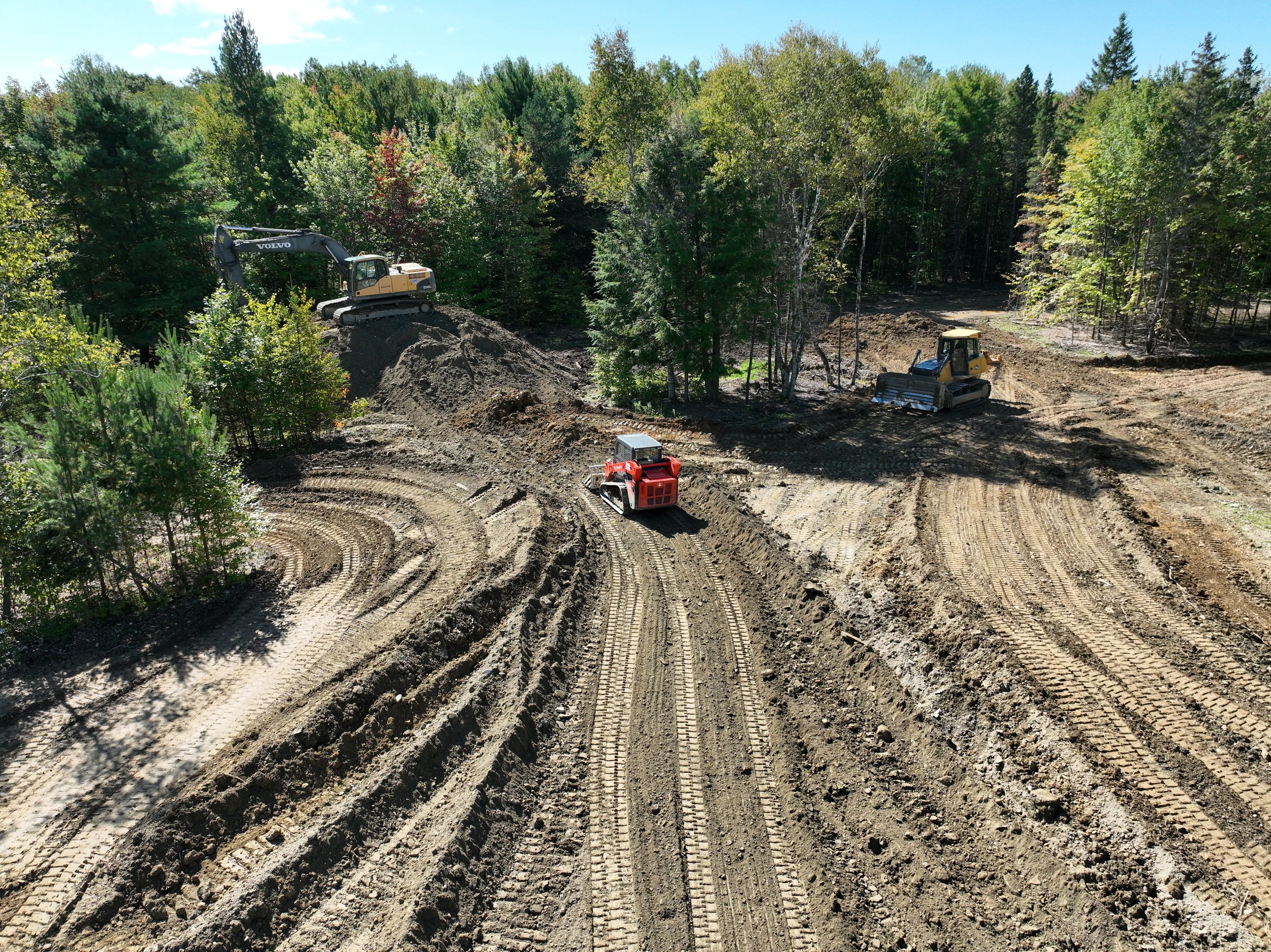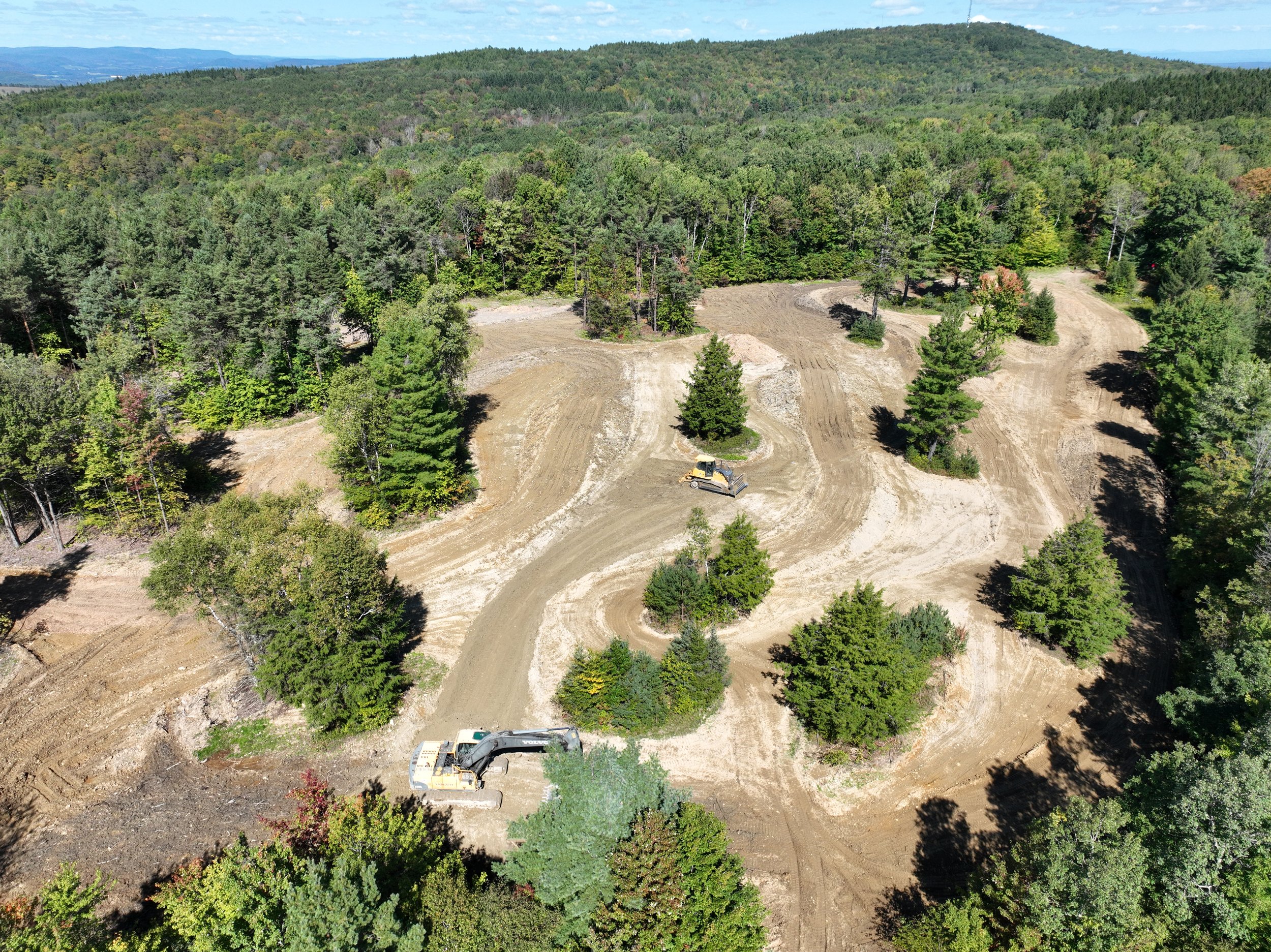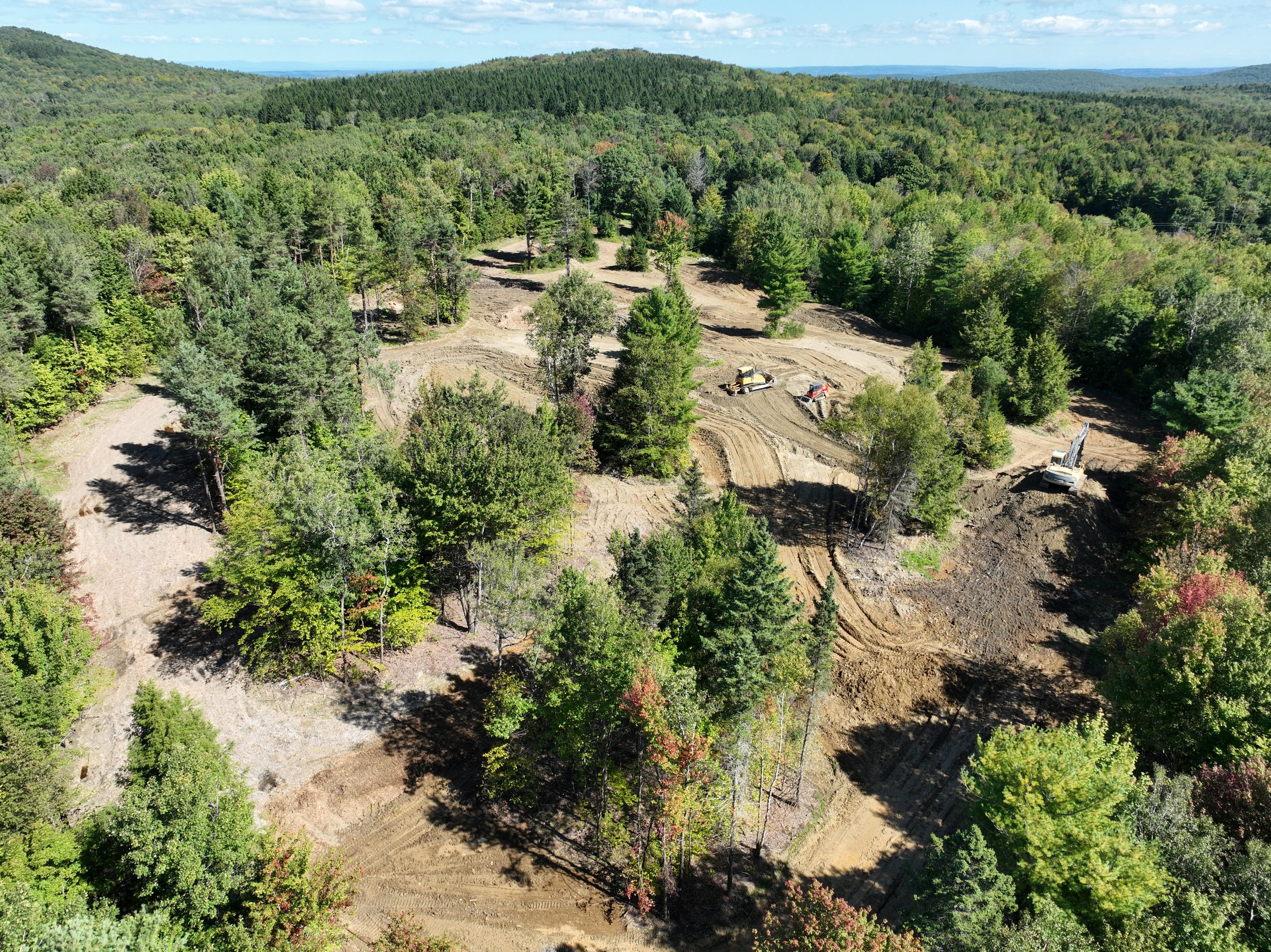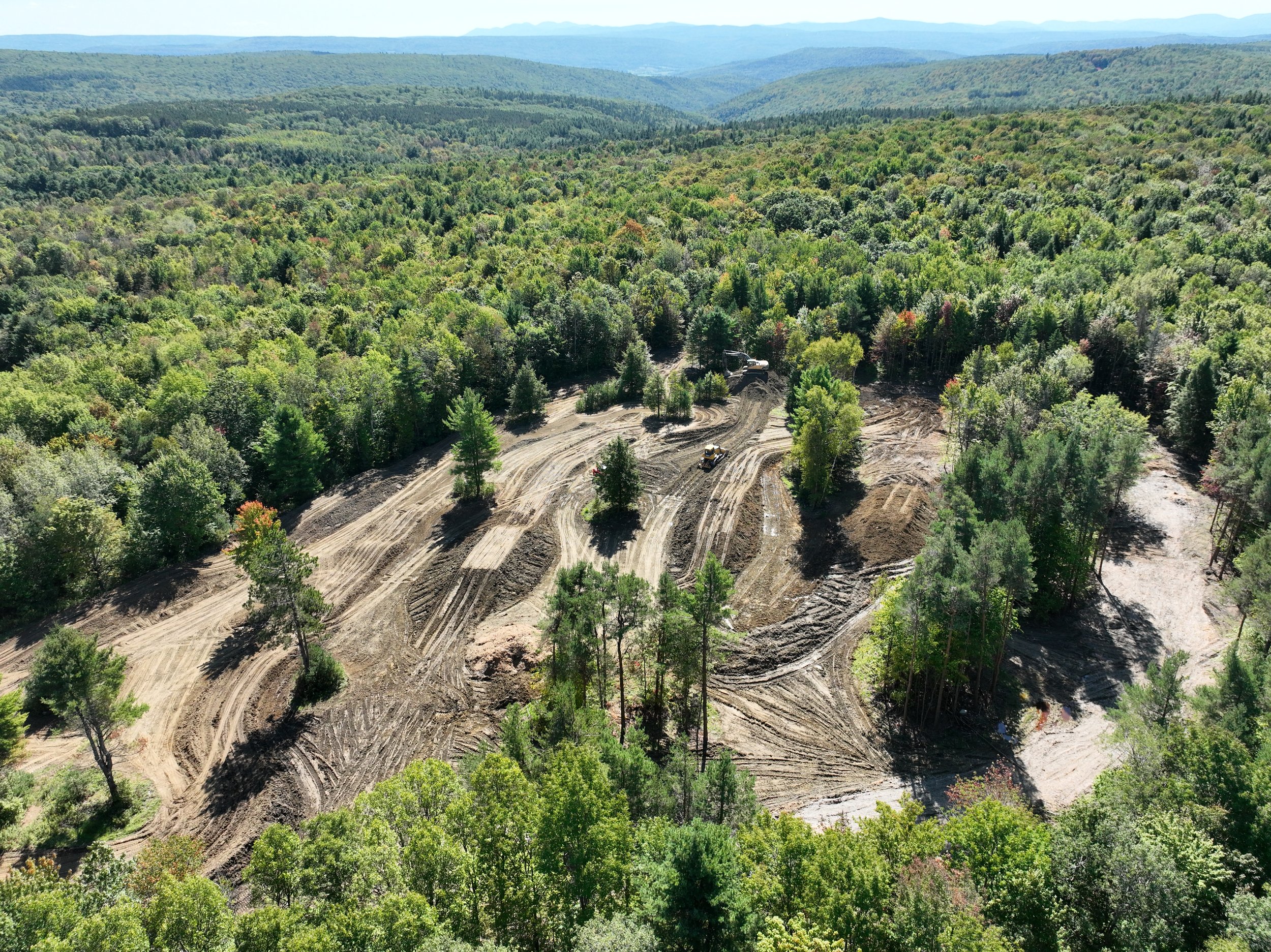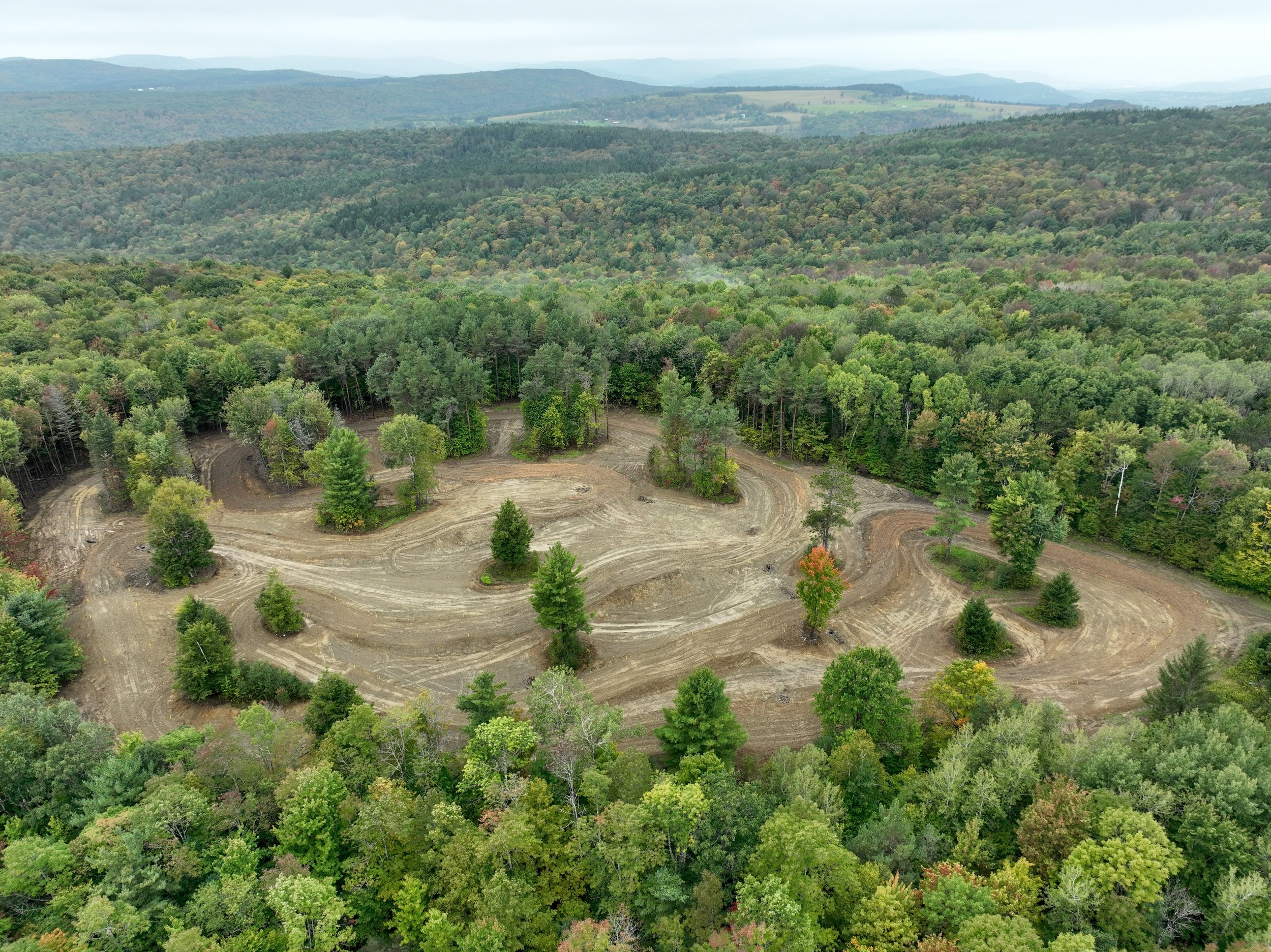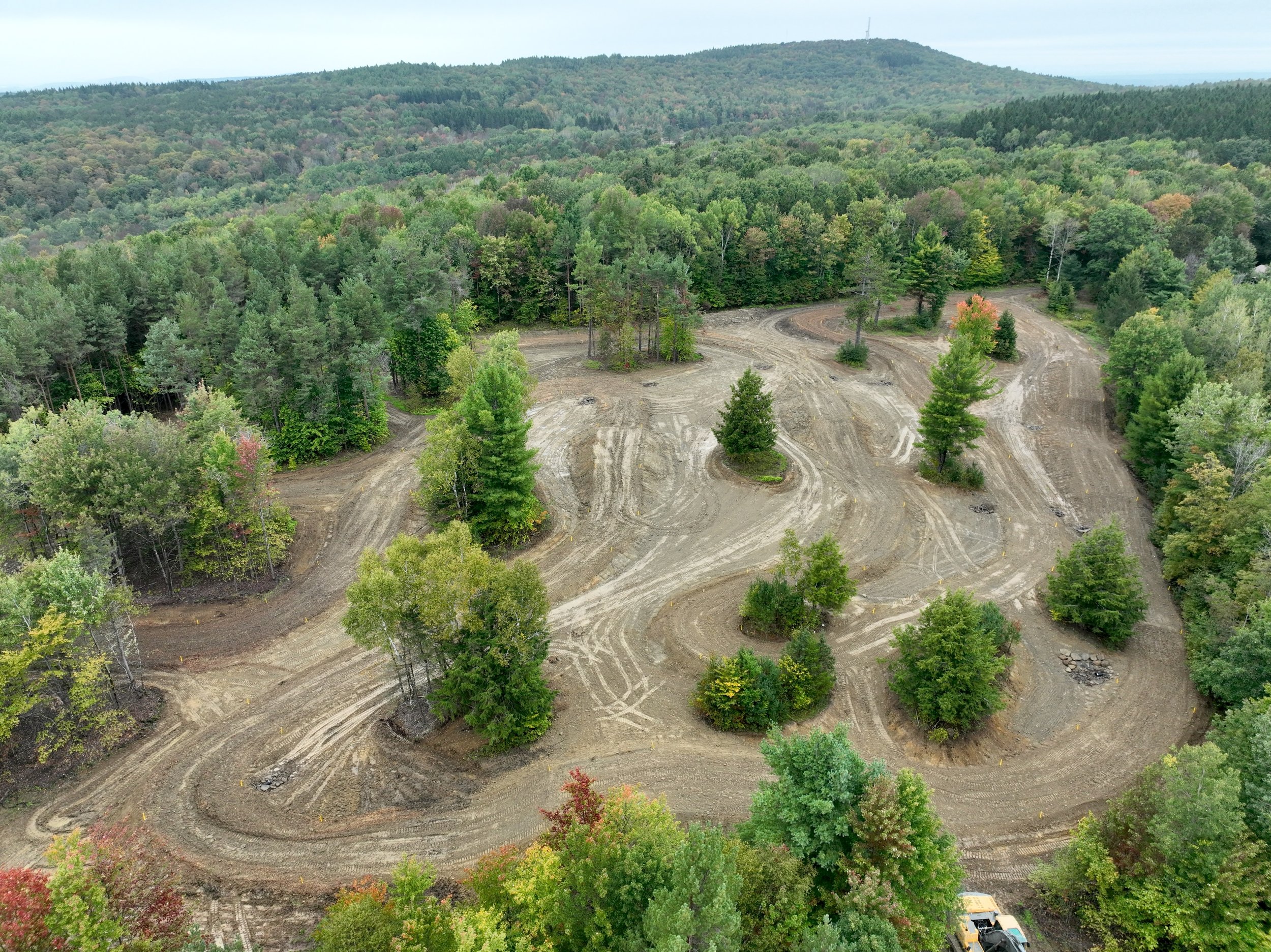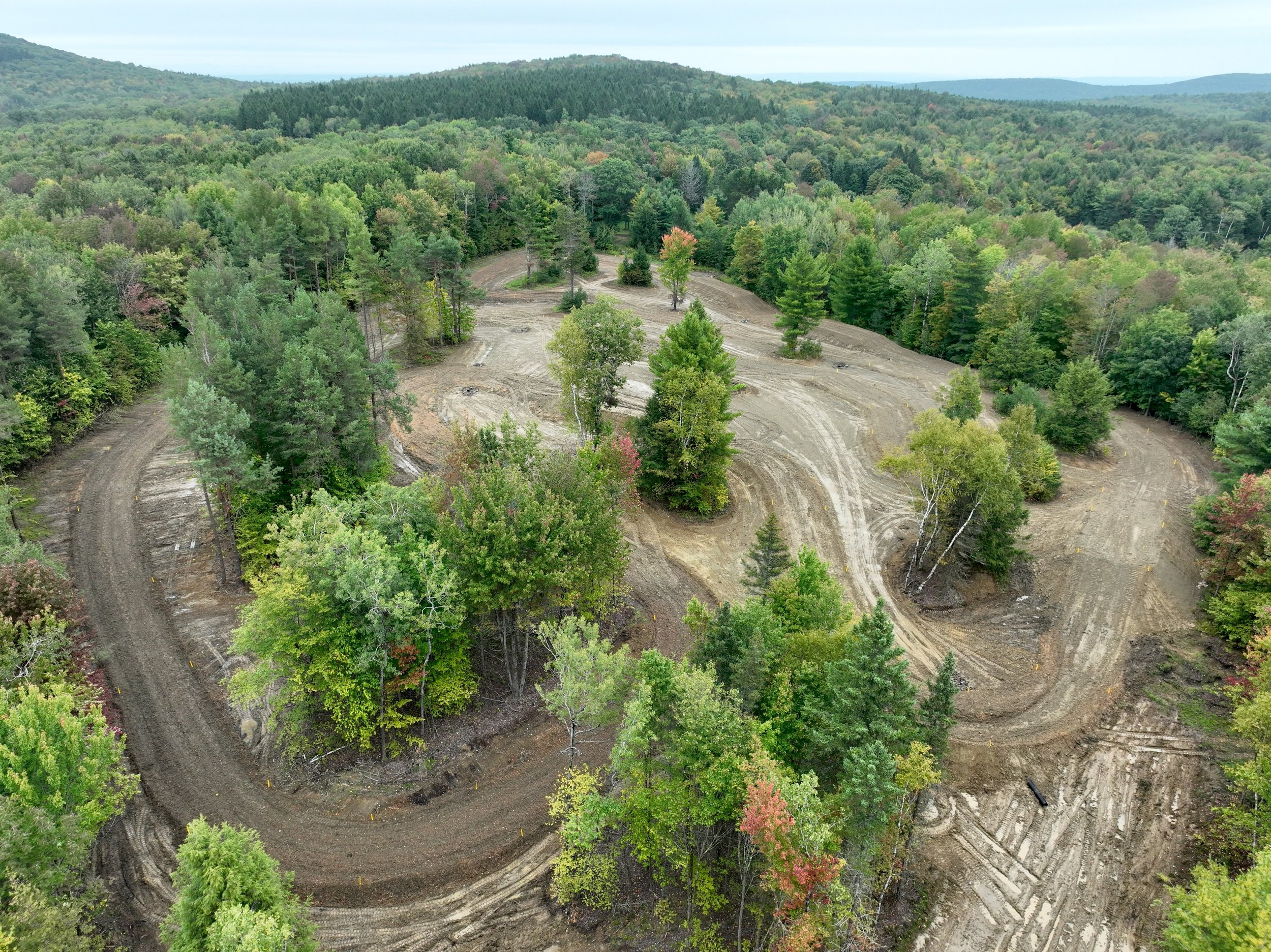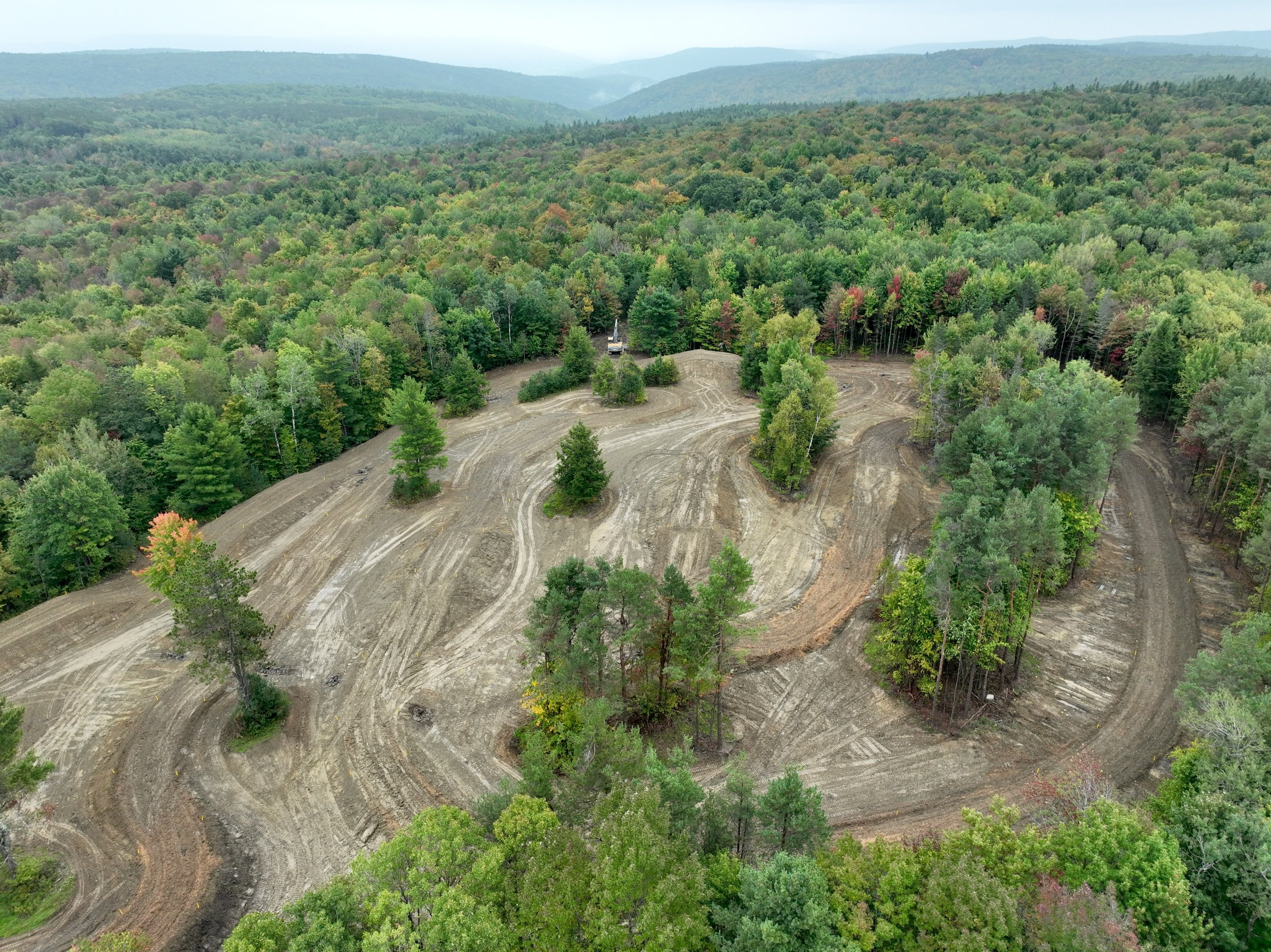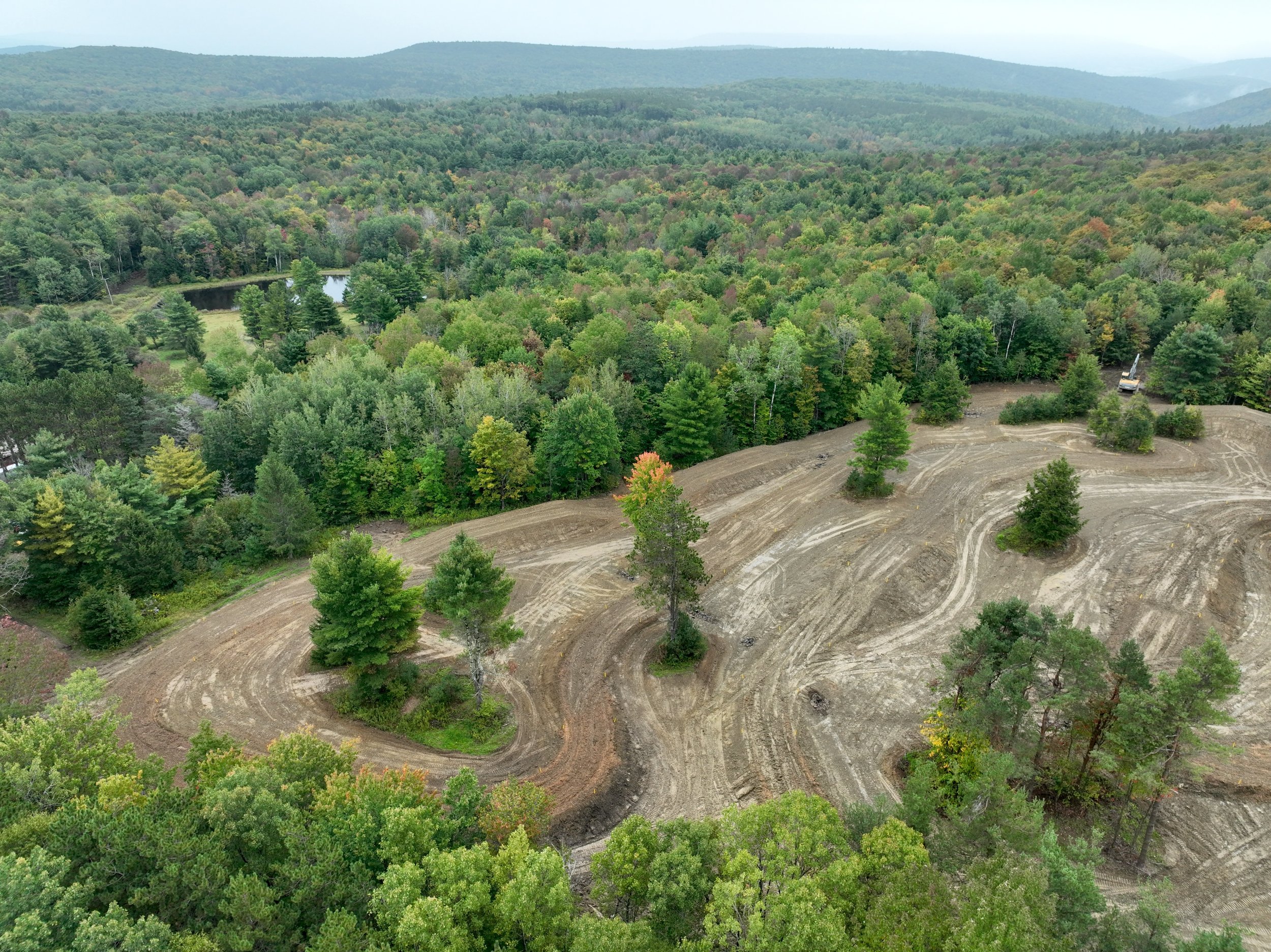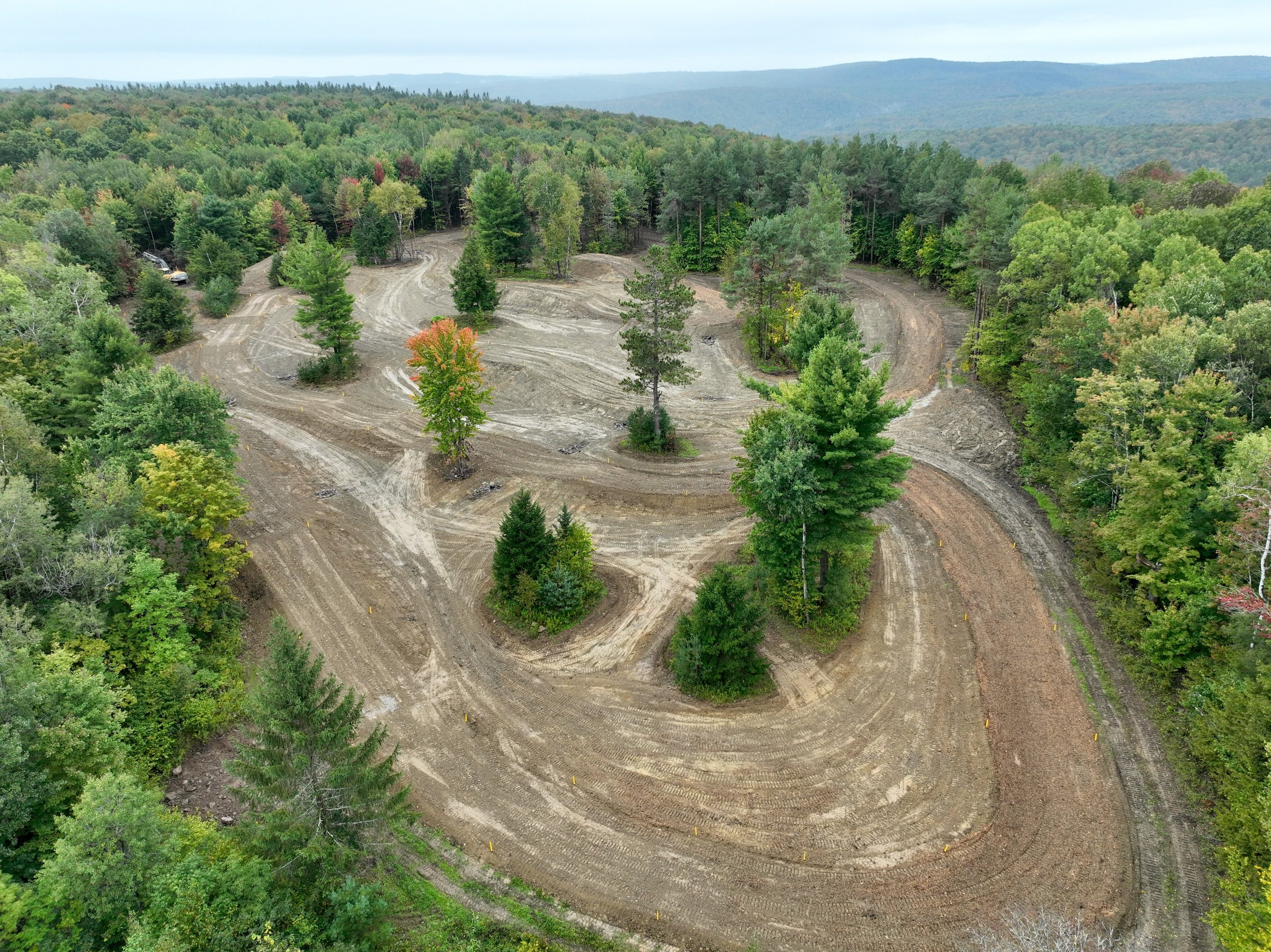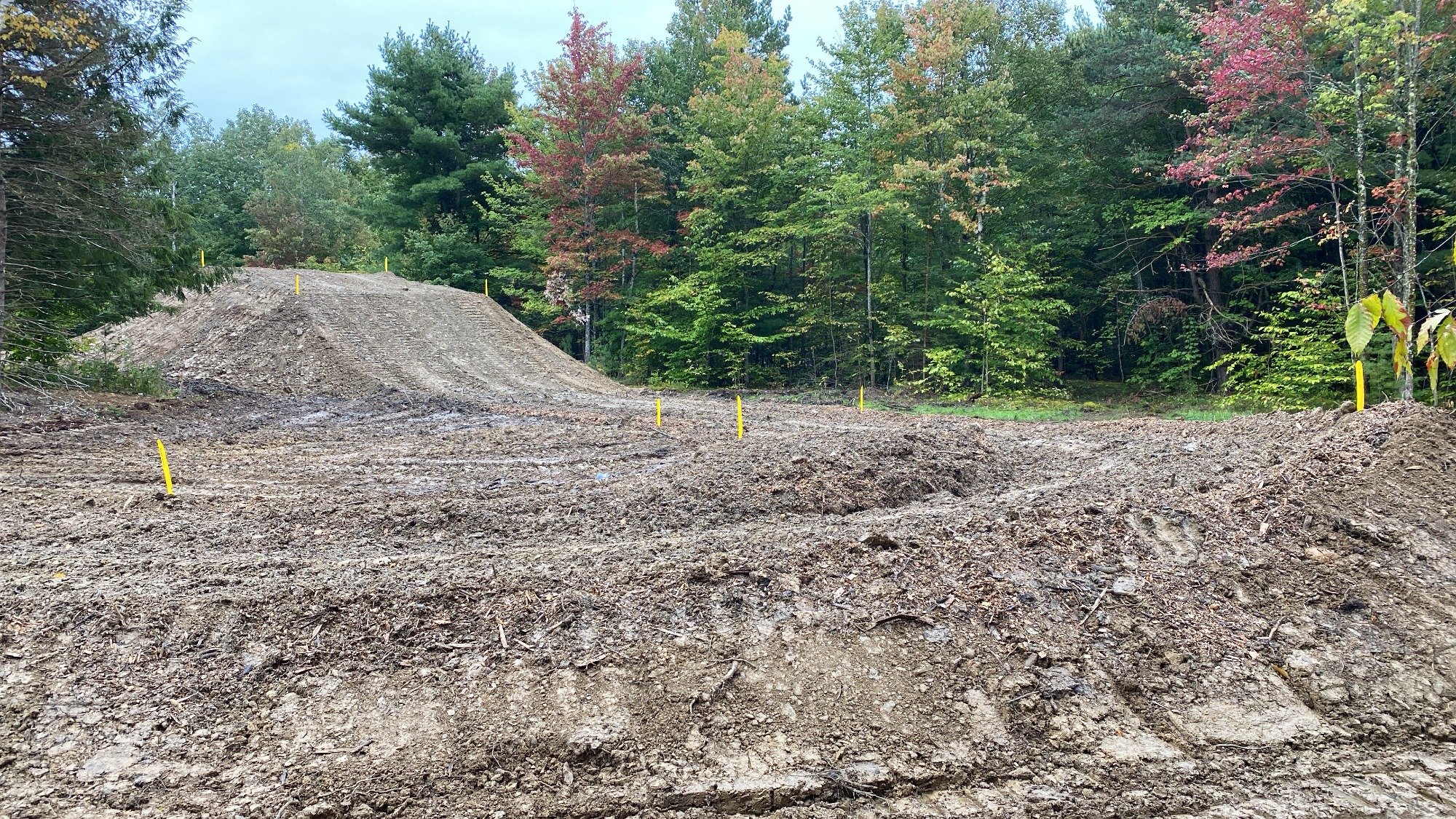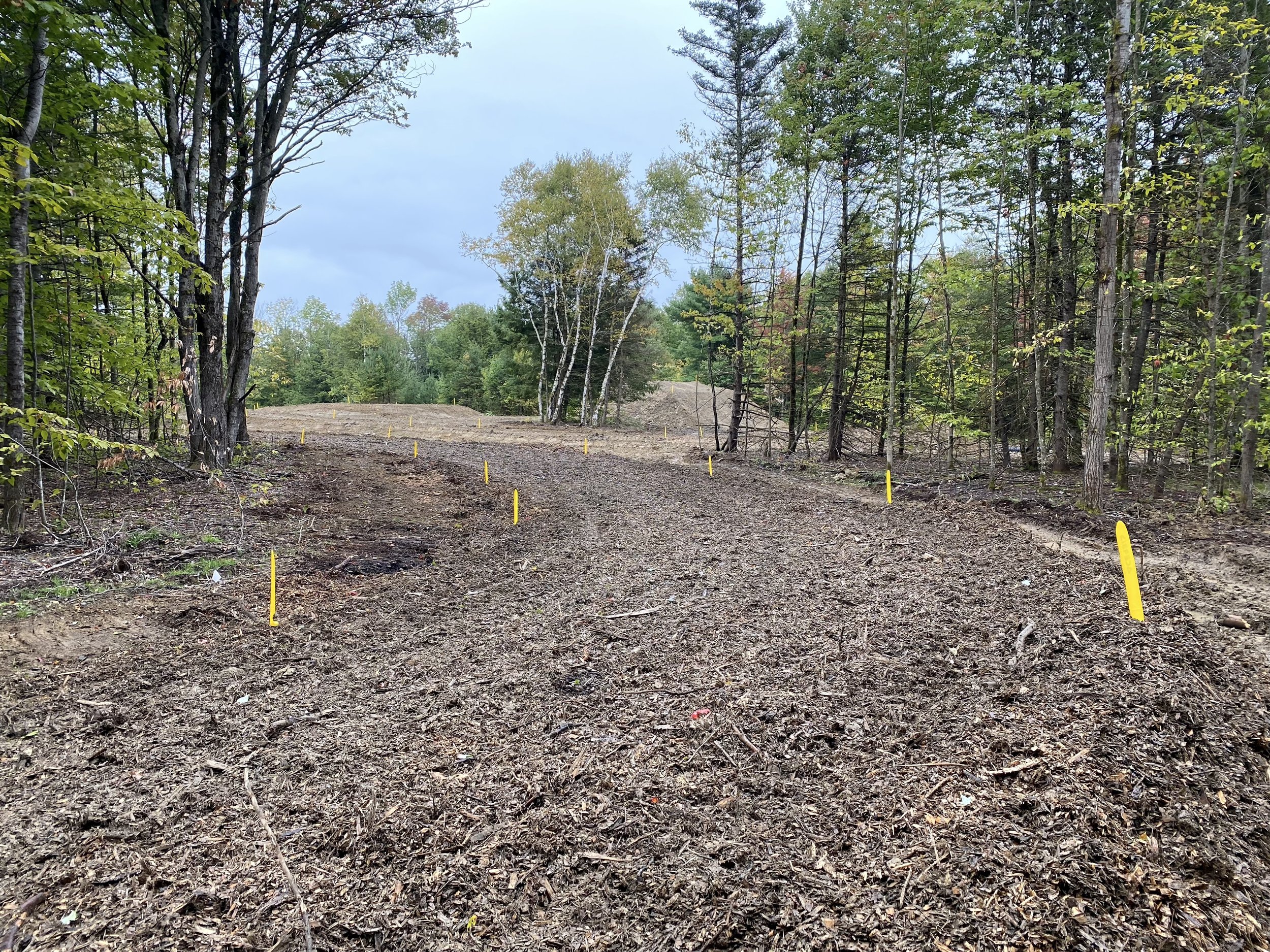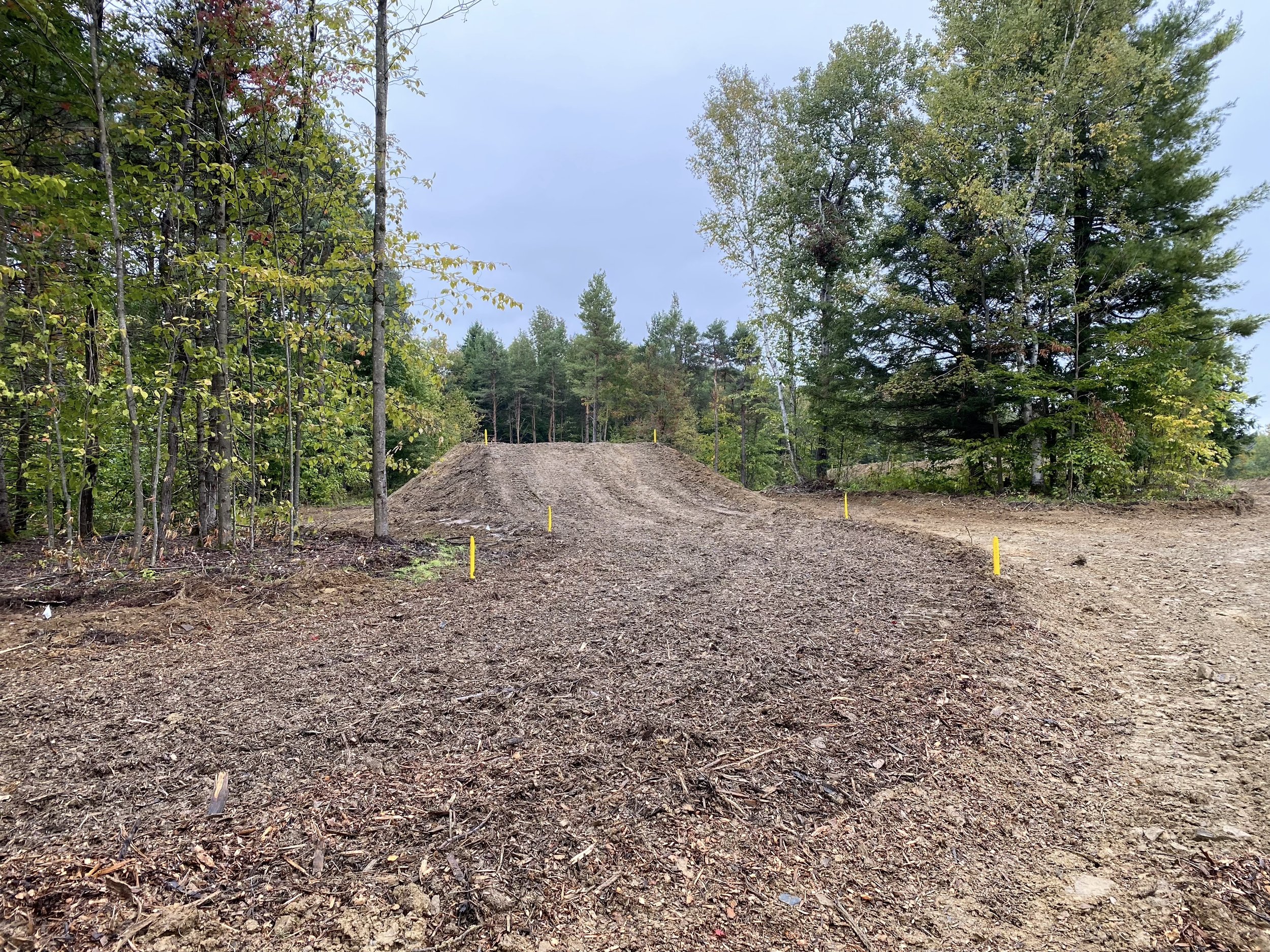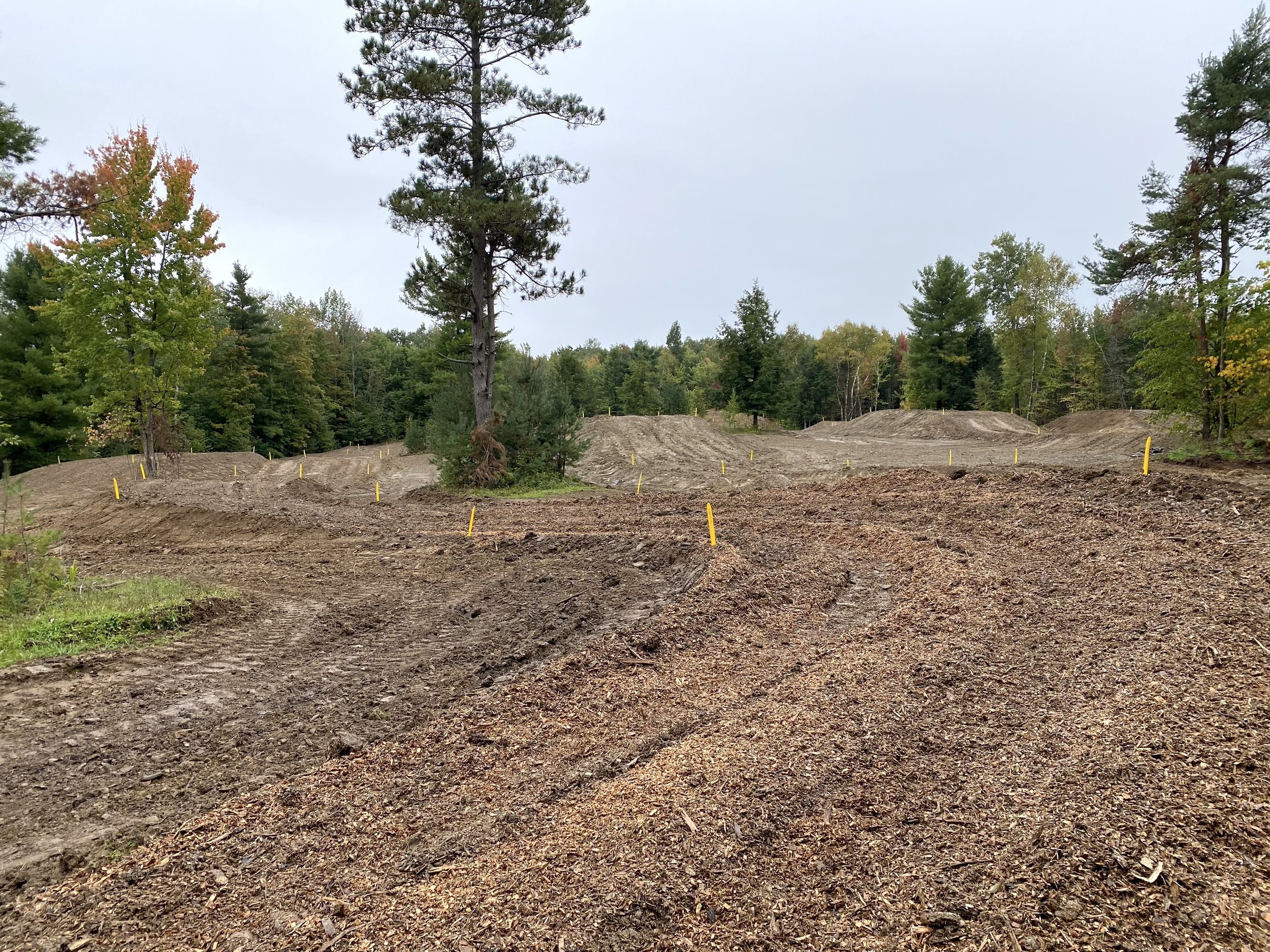Putting nature back into a private five-acre motocross track in upstate New York
“Rip Van Winkle” is a folktale about a villager who falls asleep in the Catskill Mountains for 20 years, only to wake up and realize the world has changed. Believe it or not, there’s a correlation between this 200-year-old story and our motocross track build in Cobleskill, NY (part of Schoharie County). For starters, Cobleskill is on the edge of the Catskill Mountains. Secondly, we figured the project was going to take roughly as long as ol’ Rip Van Winkle was asleep for. After all, we had to clear five acres of wilderness and strip the soil before even thinking about sculpting a track layout.
All kidding aside, there is a passionate motocross rider in Cobleskill who owns 300 acres of forest. For ten years his dream had been to own a private track. Several builders viewed the property, but all left as quickly as they came. Enter MX Track Builders. We did a site check and soon realized the battle we were up against. After educating the customer on all the steps it would take to transform densely wooded property into a motocross track, we broke ground.
Mother Nature can be friend or foe. In this case she was our worst nightmare. It started raining the first day on the job and never let up. The project site turned from dirt to mush to soup from all of the water. We were able to get the trees down and processed – removing the entire tree from the ground, including the stump. We cut the root balls off and stacked separate piles of trees and stumps. It took three water-logged weeks. The original time estimation was two weeks for phase one of the project, but the rain caused extra time, equipment, and labor.
For phase two we brought in a massive woodchipper and fed entire trees through it. The chipper made perfect golden piles of wood chips that we left until the track was built so we could work the chips into the soil. Then we stripped off the top layer of roots to get the surface down to dirt. The roots, branches, and dry material (which turned to soup from the rain) was scraped to the side.
The rain kept hammering us, so eventually we had to wave the white flag. Two months later we returned to the job site, only for a hurricane to pummel the team while doing the dirt work for the track’s construction. Fortunately, we persevered and moved through the final phase. That included grading the site to help with water drainage. The swales were lined with stone that had been screened from the soil. Not only did screening the dirt improve the track surface, but it also reduced the costs for the customer. Once the track was built, we mixed the wood chips into the soil and lined the track with markers.
The build took four weeks across several months, which is longer than the typical amount of time for a five-acre track. The good news is that a lot of hardships we learned can be applied to future job clearing opportunities. Taking down part of a forest, recycling the trees and stone to put back into the track and help with drainage was a really cool part of the build. Now, just like Rip Van Winkle, we’re ready to sleep for 20 years!

